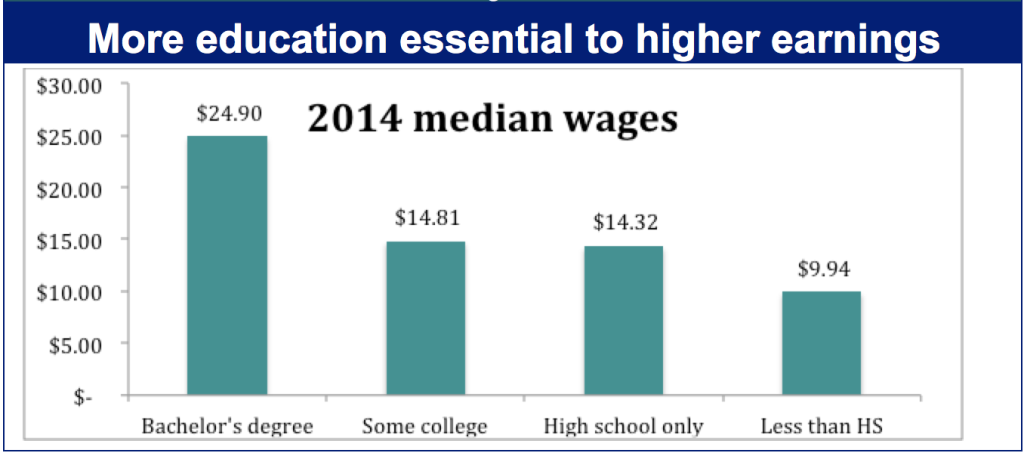
Ohio's underachieving support of higher education
December 23, 2015
Ohio's underachieving support of higher education
December 23, 2015

Ohio is underinvesting in higher education. We’re behind where we were during the recession, adjusting for inflation. We have not put enough into classroom instruction and operations. We spend $309 million less in this budget on need-based financial aid than we did in 2008-2009. This is cheating our own future.
(see our report: High tuition, low aid, too little state investment)
A skilled workforce is an essential component of a prosperous and inclusive state economy. Attaining a degree or other credential has obvious benefits to graduates and their families. Higher education insulates against unemployment and can be a pathway out of the low-wage economy. Funding for higher education is linked to increases in productivity, increased wages and a more adaptable labor force.
At the height of the recession, the state cut support for public higher education institutions and slashed need-based financial aid. Even though we have made some strides in holding down rising tuition and fees, Ohio remains one of the priciest states for both four-year and two-year public schools. Not surprisingly, the state also has very high levels of student debt. In the 2016-17 budget, Ohio made progress toward reinvesting in higher education, but it is not enough to close the gap.
Growth in demand for higher education has come from low-income students. Students from the lowest quarter of the income scale increased participation in higher education by 68 percent over the past 40 years. However, they had the toughest time making it through. About 11 percent completed college. By contrast, about 80 percent of high-income students completed college.
The balance of work and classroom demands proves a daunting barrier for many students from low-income families. But to boost opportunity and grow the economy, Ohio needs more of these strivers to make it through to graduation and good paying jobs.
People know education matters for their economic future, and data bears this out. The graphic above illustrates the wage premium associated with different levels of post-secondary education. It also matters for unemployment. The more education you have, the lower the overall unemployment rate.
Policy Matters Ohio has taken an in-depth look at trends in higher education investment since 2008, and finds we are still below the curve. The biennial budget increases state support for higher education and financial aid, but Ohio is still below pre-recession levels for both. Ohio has a world-class network of public universities, community colleges and branch campus institutions. Underfunding this public system and keeping financial aid low hampers long-term prosperity for workers and our state as a whole.
-- Wendy Patton
Wendy is Policy Matters senior project director.
Photo Gallery
1 of 22
